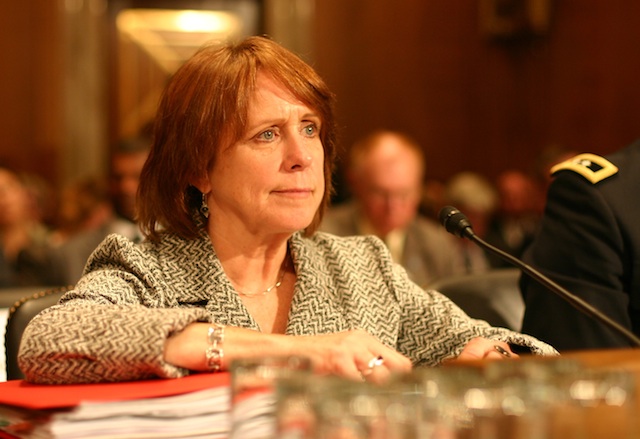WASHINGTON – Like other states that have suffered from epic rains in recent months, Vermont is looking to improve the way it handles flood control.
States in the Midwest and South experienced unprecedented flooding caused by snowpacks triple the normal size and rainstorms resulting in 500-year floods.

The Army Corps of Engineers can help states and local agencies devise coordinated plans to handle flood risk, Jo-Ellen Darcy, the Army’s assistant secretary for civil works, said on Capitol Hill Tuesday.
“The flooding was epic, there’s no doubt about that,” Sen. Kent Conrad, D-N.D. said Tuesday at a Senate environment committee hearing to evaluate the Army Corps of Engineers response to flooding and its plans for next year.
“Floods are natural events,” said Gerald E. Galloway, professor of civil and environmental engineering at the University of Maryland. “Absolute control is not possible,” he told the committee.
Rather than attempting concrete control, the goal should be flood risk management, involving a mix of traditional structures as well as open and green areas like wetlands, Galloway said. He urged senators to move forward with a national flood management plan, to be coordinated with local and state agencies.
Aging, privately owned dams, like those in Vermont and other Northeastern states, have no central system design, said Jo-Ellen Darcy, the Army’s assistant secretary for civil works. An integrated management plan is needed to manage flood control along rivers with such dams, Darcy said. The Corps can give technical assistance to state and local agencies that are looking to come up with management plans, she said.
In response to the catastrophic flooding in Vermont, the state is evaluating the network of communication between the entities that operate flood control dams, according to David Mears, commissioner of the Department of Environmental Conservation.
“We need to look at some of the communication protocols,” Mears said in a phone interview Tuesday. “To make sure everybody is in sync.” Experiences during Irene flooding, like the crossed lines of communication at the Marshfield Dam, show that a plan is needed, Mears said.
The Vermont Division of Emergency Management, the DEC and the Army Corps are involved in coming up with such a plan, he said. The Army Corps is involved because it operates some control dams in the state and the DEC is responsible for state-owned dams and high-risk dams that pose a hazard because of age or condition, he said.
